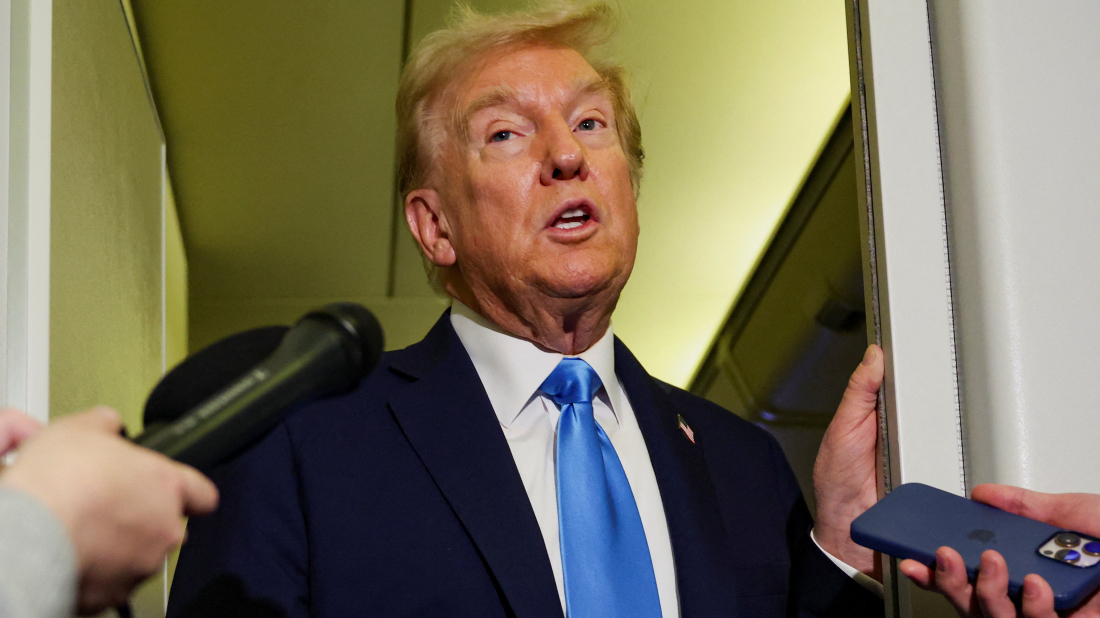UN Security Council to hold emergency meeting after Israel recognises Somaliland
The UN Security Council is set to hold an emergency session on Monday to discuss Israel’s recognition of Somaliland as an independent state, amid cr...

President Donald Trump announced on Saturday plans to impose an extra 10% tariff on Canadian imports following a television advertisement aired by Ontario that used edited clips of former President Ronald Reagan to criticise U.S. tariffs.
The advert, which aired Friday night during the first game of the World Series, criticised U.S. trade policies using Reagan’s 1987 radio address. Trump said the Ronald Reagan Presidential Foundation and Institute confirmed the ad “misrepresents the Presidential Radio Address” and that permission for its use had not been granted. The foundation added that it was “reviewing its legal options.”
Trump condemned the advert as a “serious misrepresentation” intended to sway the U.S. Supreme Court ahead of a key hearing on his authority to impose tariffs. He wrote on Truth Social:
“Their advertisement was to be taken down immediately, but they let it run last night during the World Series, knowing that it was a fraud. Because of their serious misrepresentation of the facts, and hostile act, I am increasing the tariff on Canada by 10% over and above what they are paying now.”
It remains unclear what legal authority Trump will use to implement the additional import taxes or when they will take effect. The White House has not commented on the scope or timeline of the increase.
Trade tensions and economic impact
Canada’s economy has already been hit hard by existing U.S. tariffs. Many Canadian exports face 35% duties, while steel and aluminium are taxed at 50%. Energy exports are subject to lower rates of around 10%, while most products compliant with the United States–Mexico–Canada Agreement (USMCA) remain duty-free.
Trump and Canadian Prime Minister Mark Carney are both due to attend the ASEAN Summit in Malaysia this week, but Trump said he has no plans to meet his counterpart there.
Economists warn that maintaining or expanding tariffs could further strain North America’s supply chains. Steel and aluminium are essential for industries including car manufacturing, construction, and home appliances — meaning higher costs for U.S. consumers are likely.
In June, Trump suspended talks with Canada over a proposed Digital Services Tax targeting U.S. tech firms, which Ottawa later scrapped under Washington’s pressure. With trade negotiations now frozen, analysts expect current tariffs to remain in place for the foreseeable future.
Last year, the U.S. ran a $63 billion trade deficit with Canada, according to the Office of the U.S. Trade Representative. Canada remains America’s second-largest trading partner, with about three-quarters of its exports headed south of the border.
New York placed the state under emergency measures on Friday as a powerful winter storm brought the heaviest snowfall since 2022, disrupting travel across the north-east of the United States.
Russia launched missiles and drones at Kyiv and other parts of Ukraine overnight on Saturday, Ukrainian officials said, ahead of talks on Sunday between President Volodymyr Zelenskyy and U.S. President Donald Trump aimed at ending nearly four years of war.
The United States carried out a strike against Islamic State militants in northwest Nigeria at the request of Nigeria's government, President Donald Trump and the U.S. military said on Thursday.
Israel became the first country to formally recognise Somaliland as an independent state on Friday, drawing strong condemnation from Somalia and regional and international organisations.
President Volodymyr Zelenskyy has said he will meet U.S. President Donald Trump on Sunday to discuss territory and security guarantees, as diplomatic efforts intensify to end Russia’s war in Ukraine.
Italian authorities have arrested nine people on suspicion of financing Hamas through Italy based charities, prosecutors said on Saturday, in an operation coordinated by anti mafia and anti terrorism units.
The UN Security Council is set to hold an emergency session on Monday to discuss Israel’s recognition of Somaliland as an independent state, amid criticism from African, Middle Eastern, and other international actors.
Two people were killed and 26 others injured after a massive multi vehicle crash on a major expressway in Japan as the country began its end of year holiday travel period, police said on Saturday.
Russian President Vladimir Putin said on Saturday that Russian forces have captured the Ukrainian towns of Myrnohrad in Donetsk region and Huliaipole in Zaporizhzhia region, describing the developments as part of the ongoing "special military operation."
Canada will provide an additional $2.5 billion in economic aid to Ukraine, Prime Minister Mark Carney said on Saturday, as he met Ukrainian President Volodymyr Zelenskyy during a stopover in Halifax ahead of Zelenskyy’s visit to the United States.
You can download the AnewZ application from Play Store and the App Store.

What is your opinion on this topic?
Leave the first comment